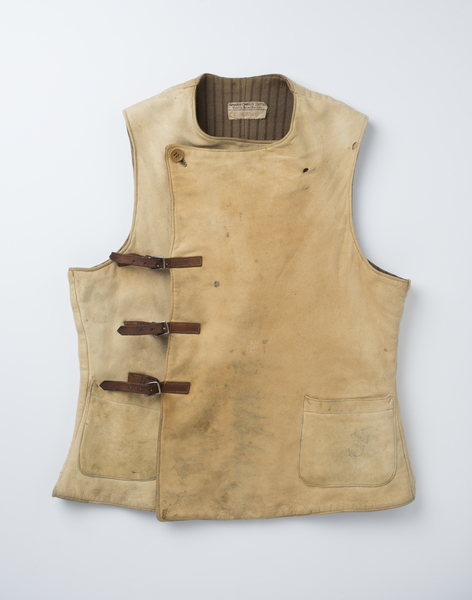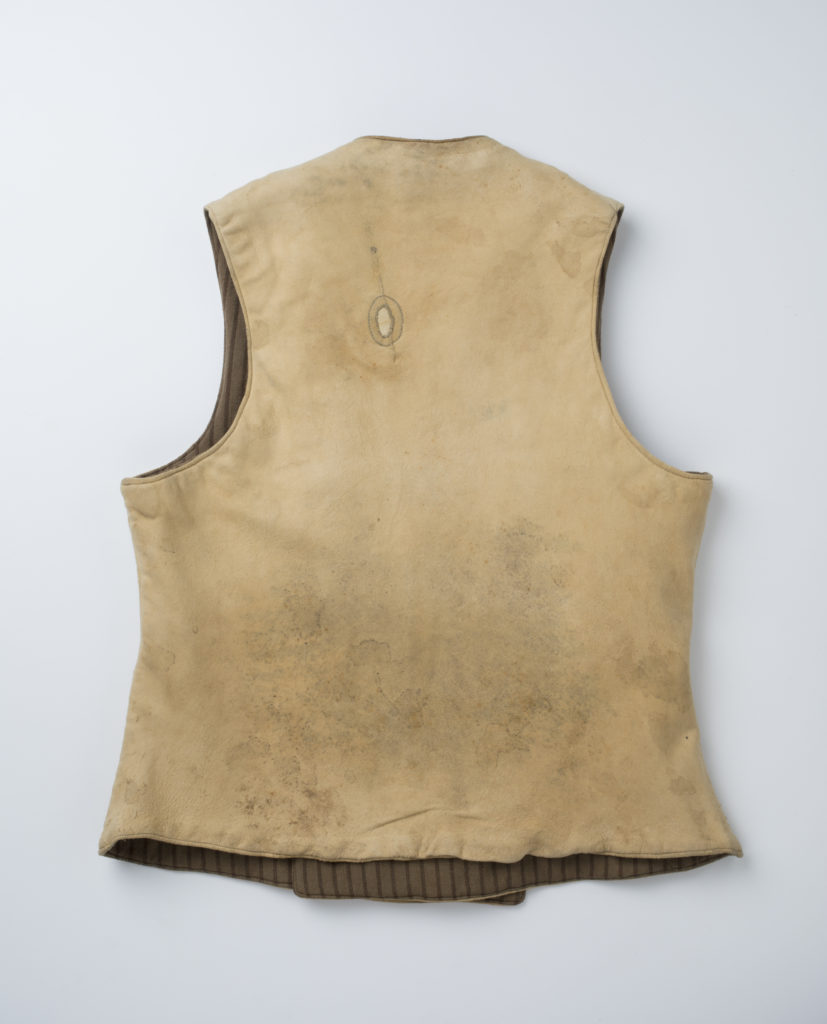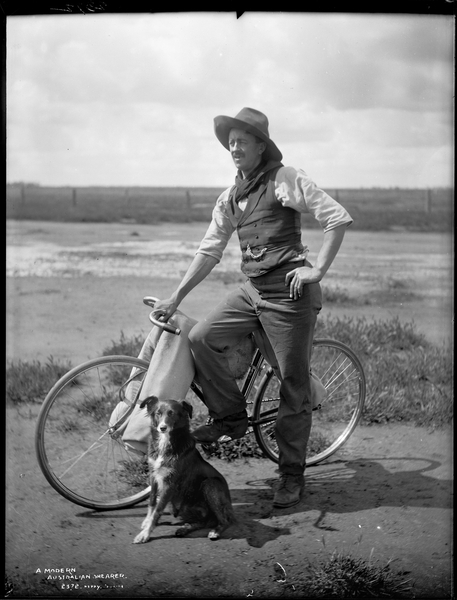
Some of the rewarding aspects of the exhibition development process involve content development such as writing the storyline and text for labels and theme panels, and researching and selecting objects. What you might not know are some of the small and unique intricacies of this process. In this blog post, I’ll share my experience getting up close and personal with a vest in the collection.
One of the best things about developing an exhibition featuring objects from the MAAS collection is the opportunity to undertake research into items that were acquired earlier in the Museum’s history. This men’s chamois vest which entered the Museum’s collection in 1968 is a wonderful example of the detective work that can be involved in researching an object’s provenance (history of ownership).
We were intrigued about the history of the vest and for what purpose it might have been worn. The informal style and soiling suggest that it may have been worn for some form of manual labour. Furthermore, the alterations on the reverse also allude to its repeated use and a desire to sustain its longevity.

Could the vest have been worn by a shearer? This photograph from the Museum’s Tyrrell collection published by Sydney firm Charles Kerry & Co. between 1884 and 1917 sheds light on similar styles of men’s dress during the aforementioned period.

We investigated the Museum’s archives to explore more. The curatorial team often seek the expertise of our archivist, Paul Wilson when it comes to researching the Museum’s archives. Paul has a talent for solving mysteries about historical donors and digging up valuable contextual information. The name ‘E R Mitchell’ is handwritten on the maker’s label of the vest.

Paul was able to help us determine the owner as Edgar Robertson Mitchell, an engineer who interestingly served with the British Army as a Bombardier with the Royal Garrison Artillery. Perhaps he had already been in England when war was declared or he travelled there early on before the Australian Imperial Force (AIF) was formed. To explore this, we were able to go one step further and make contact with Ian Miles, an indirect descendant who undertook considerable research into the Mitchell family history. Ian was able to confirm that Edgar Robertson Mitchell was born in 1880 in Petersham, New South Wales, and after training in Pattern Making at Sydney Technical College departed Australia for Liverpool, England, in 1909. He returned to Australia in 1920 with his wife and settled in Narrabeen, on Sydney’s Northern Beaches, for the remainder of his life. The vest is a strong piece of material evidence attesting to Edgar’s long career constructing engineering models, thereby solving the mystery of its use.
It was still a little difficult to pinpoint the date of manufacture of the vest, with Edgar having lived in Sydney with access to the Farmer & Company department store prior to 1909 and after 1920. Another exciting discovery was finding an image of a manufacturing label with a very similar design on an officer’s trench coat dated around 1930 in a publication titled ‘Vintage Menswear: A Collection from the Vintage Showroom’, by Josh Sims, Roy Luckett and Douglas Gunn, 2012. For this reason, we’ve dated the vest circa 1930.
Of course, a lot of these summations are still conjecture and we encourage suggestions and evidence from the public to help us know exactly what this vest might have been used for. We’d love you to drop us a line here if you know more or send us an email at cur-enquiries@maas.museum.
The vest is currently featured in the Australian Men’s Style display at the Powerhouse Museum in association with the exhibition Reigning Men: Fashion in Menswear, 1715-2015 for another 3.5 weeks until 14 October 2018.
If you’d like to read more about the stories that clothing reveals, visit the Australian Dress Register, a collaborative, online project about dress in NSW. www.australiandressregister.org
Written by Vanessa Thorne, Assistant Curator